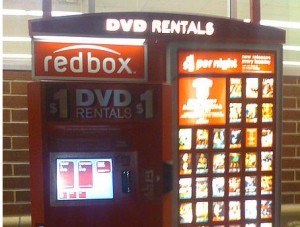Historically, the answer to the question about the three most important things in business (and real estate) was Location. Location. Location. For just about everything, location was the key to success
Unsurprisingly, technology and the internet have made location a lot less relevant for durable goods and Amazon and Ebay are shining examples of that. The ATM was also an early example that made the location of the bank a lot less relevant.
It wasn’t so long ago that there was an TV ad for The Home Depot that included a customer showing a picture of his broken whatever to the customer service person which enabled the customer service person to correctly diagnose the solution. Another case where location mattered – the guy went to a place that was close where he knew he would get good help. The home repair doctor, as it were.
Well, fast forward to 2010 and we are finally starting to see further erosion of the relevance of location. In “The Doctor Will See You Now. Please Log On” Milt Freudenheim talks about a company called NuPhysicia that does something I have frankly been waiting for, seeing the doctor without going to the doctor. With trust, low cost cameras, and the prevalence of high speed internet connections, it’s no surprise to me that service industries are now taking location out of the equation just as Netflix took the movie rental store out of the equation, and alice.com took the grocery store out of the equation.
Obviously the tide turned a long time ago in the demise of the relevance of location in many industries, but the case of medicine is significant because of all of the regulations and liability issues. In other words – if they can do it in health care, they can do it anywhere. I know that this hasn’t happened sooner because of the risk that someone using a camera has bad lighting, for example, and the doctor doesn’t see something on the screen that would have been visible in person, or that the doctor needs to feel just how firm that swollen knee is – opening the door to lawsuits when that overlooked thing becomes a serious problem.
The fact that this is in use and NuPhysicia can install their specialized equipment and that remote locations are using this service (and saving piles of money on insurance and reducing hours away from work from the doctor visits, by the way) means that many or all of those hurdles have been cleared. That should clear the way for a lot of other services that historically required face-to-face interaction to need it less and less. They have no excuse now. Not every case will result in the dramatic cost reductions that the likes of NuPhysicia can deliver, but it’s still worth some rethinking in some other industries.
WebMD was a big step forward for us in this field, but NuPhysicia really blows the door wide open.
While I expect location will always remain key to places like Starbucks, Shell, and Blue C Sushi, the list is getting a lot shorter. Just today there was an article about Disney Tickets Together, that allows you to buy movie tickets on Facebook and then recommend that movie to your Facebook friends. As we see social networking sites mature, I am sure that the number of “locations” we use on the internet will also decline and that we will continue to increase the time we spend on those sites that do multiple things for us, but that’s a blog for another day.
-Ric
 It’s vending machines, or as Stephanie Rosenbloom says the new term is “automated retail store” in her article
It’s vending machines, or as Stephanie Rosenbloom says the new term is “automated retail store” in her article 
 Businesses like Coinstar and Redbox, now owned by the same company were also a bit of a step forward in their own right. Coinstar, which allows you to dump all of your loose change into a bucket and quickly get cash back (for a fee of about 7% depending on how you do it), figured out that people are going to go to the grocery store anyway (unless, of course they use Amazon Fresh) and they have loose change that piles up, let’s offer them a service they want, that also saves the grocery store the trouble of stocking up on the change they have to hand out. Really great idea. Redbox, took the same premise and saved people a trip to the video store (or Netflix) and rents movies for only a dollar. The evolution there is that they have your credit card number so if you don’t return the movie, Redbox has a way to charge you.
Businesses like Coinstar and Redbox, now owned by the same company were also a bit of a step forward in their own right. Coinstar, which allows you to dump all of your loose change into a bucket and quickly get cash back (for a fee of about 7% depending on how you do it), figured out that people are going to go to the grocery store anyway (unless, of course they use Amazon Fresh) and they have loose change that piles up, let’s offer them a service they want, that also saves the grocery store the trouble of stocking up on the change they have to hand out. Really great idea. Redbox, took the same premise and saved people a trip to the video store (or Netflix) and rents movies for only a dollar. The evolution there is that they have your credit card number so if you don’t return the movie, Redbox has a way to charge you. Fast forward to 2010, and for the first time ever, Nordstrom has a store in Manhattan. Stephanie Rosenbloom recently published a nice piece about it
Fast forward to 2010, and for the first time ever, Nordstrom has a store in Manhattan. Stephanie Rosenbloom recently published a nice piece about it  to the manufacturers of the consumer packaged goods (CPG) that they sell at cost, with free shipping to their customers. Instead they give the data back to manufacturers who place ads on the site, which isn’t a huge difference, but worth mentioning.
to the manufacturers of the consumer packaged goods (CPG) that they sell at cost, with free shipping to their customers. Instead they give the data back to manufacturers who place ads on the site, which isn’t a huge difference, but worth mentioning. Now think about who could expand the use of this? What if you are in a store like Barnes&Noble and you find a book you like, but you don’t have to have it right now. What if amazon.com had an app that let you scan the book and let you buy it for less on their site. No writing down the title or remembering it, or to go out to amazon to order it. It’s in your shopping cart right then and there. And now that amazon is in so many different product arenas, you could do that in almost any store and know you are getting a better deal. It’s a big punch in the arm for the people paying for the storefronts, but business is business.
Now think about who could expand the use of this? What if you are in a store like Barnes&Noble and you find a book you like, but you don’t have to have it right now. What if amazon.com had an app that let you scan the book and let you buy it for less on their site. No writing down the title or remembering it, or to go out to amazon to order it. It’s in your shopping cart right then and there. And now that amazon is in so many different product arenas, you could do that in almost any store and know you are getting a better deal. It’s a big punch in the arm for the people paying for the storefronts, but business is business.